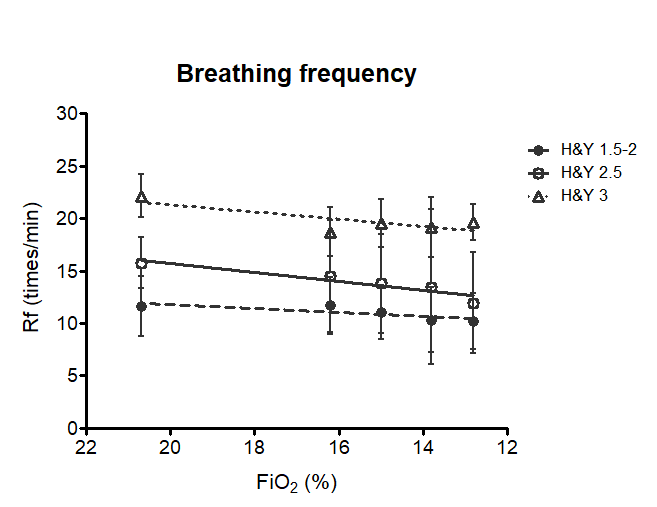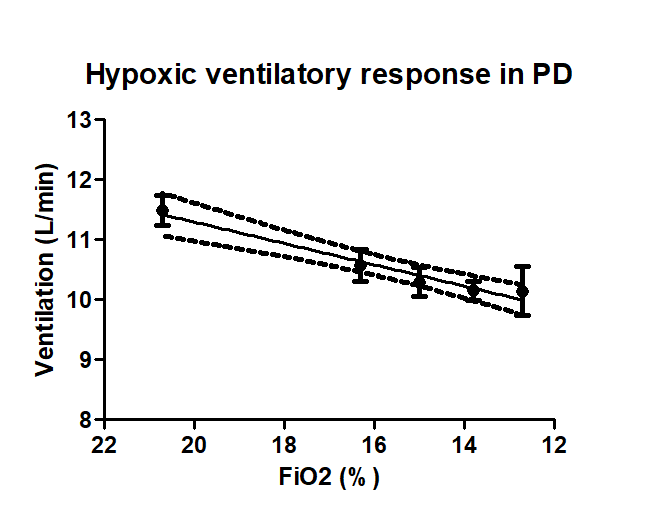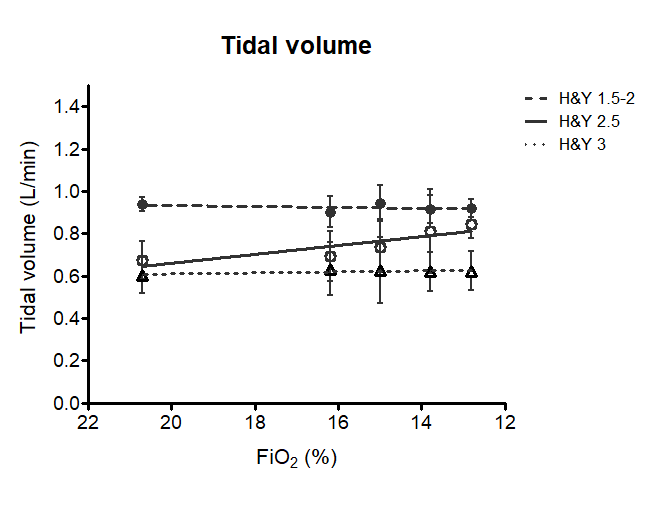Category: Parkinson's Disease: Non-Motor Symptoms
Objective: The aim of the study is to investigate signs of respiratory dysfunction across the Parkinson’s disease spectrum.
Background: Respiratory dysfunction in Parkinson’s disease (PD) is highly prevalent in individuals with advanced disease and one of the major contributors to mortality. Prevalence and mechanisms of respiratory dysfunction in early PD are unknown. Conflicting evidence suggests the presence of respiratory dysfunction well before respiratory symptoms arise. Respiratory parameters such as hypoxic ventilatory response (HVR) and arterial CO2 can give insight in the presence and mechanisms of respiratory dysfunction in earlier disease stages.
Method: 25 individuals with PD (Hoehn and Yahr stage 1.5-3) without respiratory or cardiac comorbidities were included in this study and compared to 8 healthy age-matched controls. Ventilation, breathing frequency and tidal volume were assessed using a metabolic system by blindly administering stepwise decreasing FiO2 from room air to a fraction of inspired oxygen (FiO2) of 0.127, and arterial blood gas was drawn at every FiO2 level. A linear mixed model (LMM) was used to model the HVR upon different FiO2 levels across disease severity groups.
Results: In the PD subgroup, ventilation paradoxically decreased with -0.18 L/min per point decrease in FiO2 (p<0.001), with H&Y 3 having the highest ventilation across all FiO2 levels. Compared to controls, ventilation did not significantly increase in individuals with moderate to mild disease (p=0.02). Breathing patterns of individuals with more advanced diseases were characterized by high breathing frequency and low tidal volume, akin of a rapid shallow breathing pattern. This pattern was present at rest as well as during hypoxia. SaO2 at rest was the lowest in H&Y 3, and pCO2 only marginally decreased with decreasing FiO2.
Conclusion: This study provides preliminary evidence for the presence of respiratory dysfunction across all PD stages. Future research could investigate whether HVR might be a novel predictor of risk of respiratory complications and thereby provide a biomarker of the indication for preventive respiratory training.
To cite this abstract in AMA style:
J. Janssen Daalen, P. Ainslie, H. van Hees, M. Meinders, D. Thijsse, B. Bloem. Signs of Respiratory Dysfunction across Parkinson’s Disease Spectrum [abstract]. Mov Disord. 2023; 38 (suppl 1). https://www.mdsabstracts.org/abstract/signs-of-respiratory-dysfunction-across-parkinsons-disease-spectrum/. Accessed January 2, 2026.« Back to 2023 International Congress
MDS Abstracts - https://www.mdsabstracts.org/abstract/signs-of-respiratory-dysfunction-across-parkinsons-disease-spectrum/



